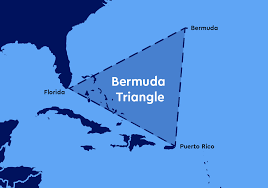From ancient rafts floating down rivers to today’s high-tech cargo vessels navigating the vast oceans, boats have played an essential role in the development of human civilization. But when was the boat invented? This simple question opens a fascinating window into the ingenuity of our ancestors and the evolution of transportation over thousands of years.
The Earliest Boats: A Prehistoric Innovation
The exact date when the first boat was invented remains uncertain due to the limited availability of archaeological evidence from prehistoric times. However, historians and archaeologists generally agree that boats are among the oldest human inventions. The consensus is that the first boats were likely built during the Neolithic period, which began around 10,000 BCE.
The earliest watercraft were probably dugout canoes—hollowed-out logs shaped with primitive tools. These boats were simple but effective and allowed early humans to cross rivers and lakes for fishing, trade, and migration. Evidence of such boats has been discovered in various parts of the world, showing that the idea of floating on water emerged independently in different cultures.
The Pesse Canoe: Oldest Known Boat
One of the most remarkable archaeological discoveries in this context is the Pesse Canoe, believed to be the world’s oldest known boat. Discovered in the Netherlands in 1955, this canoe is made from a single tree trunk (pine) and has been carbon-dated to between 8040 BCE and 7510 BCE. That places its construction at more than 9,000 years ago.
Though primitive in appearance, the Pesse Canoe showcases early humans’ ability to manipulate natural materials and adapt their environment for travel and survival. It’s a powerful testament to our ancestors’ resourcefulness and creativity.
Boats in Ancient Civilizations
As human societies developed into complex civilizations, boats evolved in design, functionality, and construction materials. Around 3,000 BCE, ancient Egyptians developed boats made of bundled papyrus reeds, which were used to navigate the Nile River. These vessels were critical for trade, transportation, and even religious ceremonies.
The Egyptians soon transitioned to wooden boats with sails, enabling more efficient travel upstream and the transport of goods such as grain, gold, and papyrus. Hieroglyphic carvings and wall paintings show that boats were central to Egyptian life, commerce, and even mythology.
Similarly, the Mesopotamians, who lived between the Tigris and Euphrates rivers, built boats for fishing and trade around 3000 BCE. Their boats were typically constructed from reeds and bitumen (a tar-like substance used to waterproof the hulls).
The Invention of Sails and Navigation
One of the most significant advancements in boat technology was the invention of the sail, which allowed boats to harness wind power and travel longer distances without relying solely on human rowing. Evidence suggests that sailing vessels were in use in Egypt by 3000 BCE, with sails made of woven reed or linen cloth.
The development of navigation techniques and maritime knowledge helped spread seafaring culture to the Mediterranean, where the Phoenicians, around 1200 BCE, became prominent maritime traders. Their well-built wooden ships with square sails allowed them to explore and trade throughout the Mediterranean Sea, establishing colonies and spreading culture.
Boats in Asia and the Pacific
While Europe and the Middle East were innovating in boat design, Asian and Polynesian cultures were making remarkable strides of their own. In China, boat building dates back thousands of years, with evidence of dugout canoes and advanced wooden boats used for inland and maritime navigation.
The Austronesian peoples, originating from Taiwan and Southeast Asia, are credited with the development of outrigger canoes and double-hulled vessels as early as 1500 BCE. These boats allowed them to navigate the vast Pacific Ocean and settle distant islands such as Hawaii, Easter Island, and New Zealand, long before Europeans ventured into those waters.
Their navigational skills—based on stars, ocean swells, and bird migration—were incredibly advanced and remain respected even today.
Roman and Greek Maritime Achievements
By the time of the Greeks and Romans, boats had become highly advanced. Greek triremes (warships) and merchant vessels featured oarsmen, rudders, and sails for speed and maneuverability. The Romans, known for their engineering prowess, further improved ship designs and built extensive naval fleets for both military and commercial purposes.
They even created ports and harbors, like the famed Portus near Rome, to support large-scale maritime trade and naval operations. Boats during this period could carry cargo across the Mediterranean and even venture into the Atlantic.
Medieval and Renaissance Boat Development
During the Middle Ages, Viking longships made a mark with their speed, shallow drafts, and capability to navigate both seas and rivers. These vessels enabled the Norse people to explore as far as North America (Vinland), long before Columbus’s time.
In the Renaissance period, European powers like Spain and Portugal developed large sailing ships such as caravels and galleons, enabling the Age of Exploration. This era saw adventurers like Columbus, Magellan, and Vasco da Gama crossing oceans and establishing global maritime routes.
Industrial Revolution and Modern Boats
The Industrial Revolution in the 18th and 19th centuries brought transformative changes to boat design. Wooden hulls were replaced by iron and steel, and steam engines replaced sails and oars. This gave birth to the modern ship, capable of moving vast cargoes and people across oceans with reliability.
The first practical steamboat, Clermont, built by Robert Fulton in 1807, marked the beginning of a new era. Later innovations led to diesel engines, nuclear-powered submarines, and even solar-powered boats in the 21st century.
Conclusion: From Tree Trunks to Superyachts
To answer the question “when was the boat invented,” one must journey back over 10,000 years into humanity’s early history. From the humble dugout canoe of the Neolithic age to today’s ultra-modern vessels, boats have evolved alongside human society, enabling exploration, trade, migration, and warfare.
Their invention was not just a technological breakthrough—it was a defining moment in human history, opening up the world’s waterways and shaping the path of civilization. Boats remain a powerful symbol of human curiosity, adventure, and progress—proof that when people dare to cross uncharted waters, they often discover new worlds.
